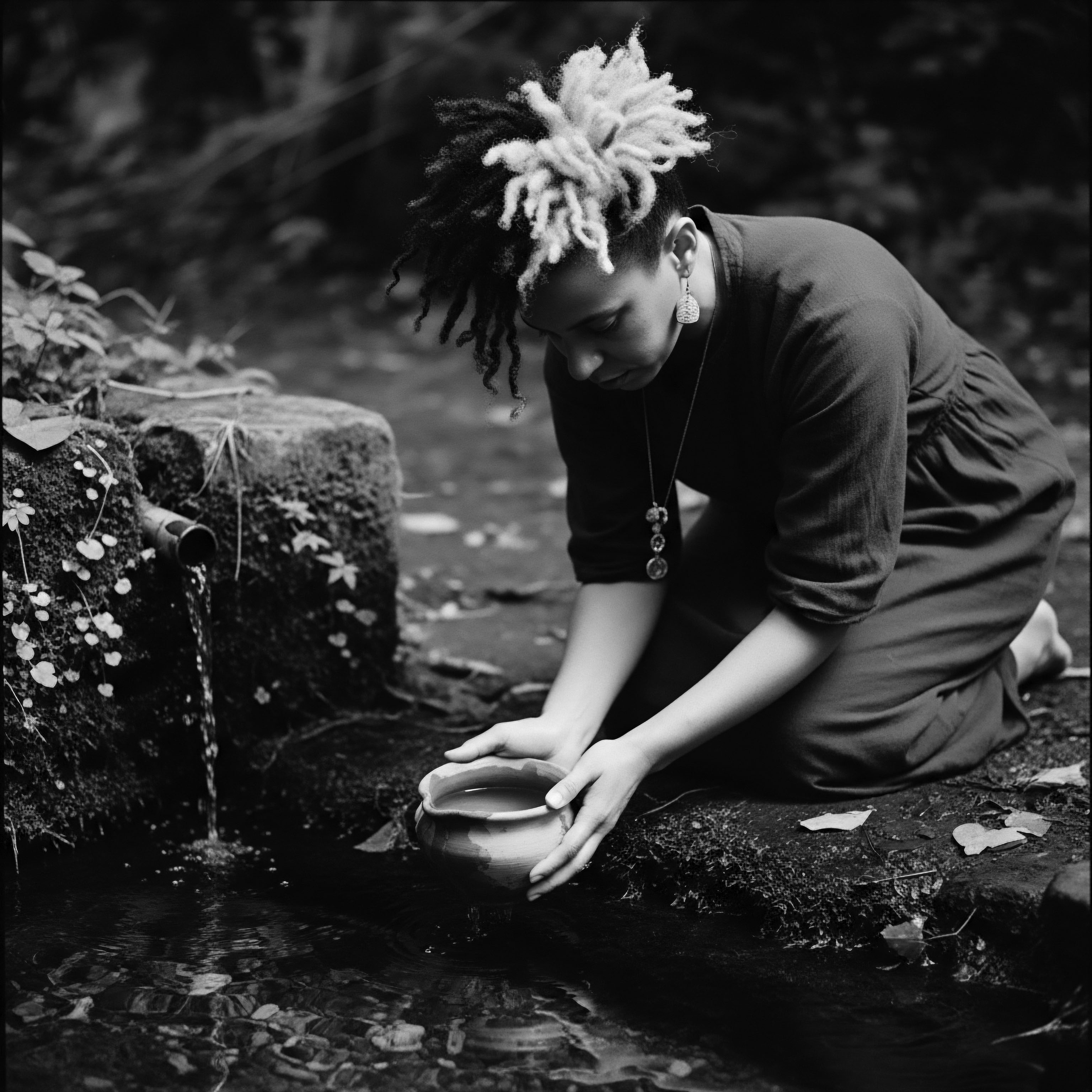
Fundamentals
Moisture absorption, at its foundational essence, describes the capacity of hair to draw in and hold water from its surrounding environment. For textured hair, this process carries a particular resonance, shaped by the ancestral journeys and unique structural characteristics that define its heritage. It is a dialogue between the hair strand and the atmosphere, a delicate exchange that determines not only the feel and appearance of the hair but also its very resilience.
From the earliest communal practices of hair care, the observation of how hair responds to water—whether from morning dew, a gentle rain, or a deliberate washing ritual—informed methods passed down through generations. This fundamental understanding, long before the advent of microscopes or chemical analysis, was the bedrock of care.
The inherent architecture of textured hair, often characterized by its beautiful coils and curls, presents a unique set of considerations for moisture absorption. Unlike straight strands where the outer layer, the cuticle, lies flat and smooth, the cuticle scales of coily hair can be more raised or open at the points of curvature. This structural predisposition means that while water might enter the hair shaft readily, it can also depart with equal swiftness, leaving the hair susceptible to dryness.
The ancient wisdom of hair care, deeply rooted in African and diasporic traditions, intuitively recognized this challenge. They sought ways to not only introduce moisture but, crucially, to seal it within the hair, a practice that echoes through contemporary hair care routines.
Moisture absorption for textured hair is a fundamental interplay between the strand’s structure and its environment, a concept understood and managed through generations of ancestral care.
Consider the simple act of washing hair. For centuries, across various African communities, water was not merely a cleanser but a sacred element in hair rituals. The process involved not just rinsing but often saturating the hair, allowing it to drink deeply before protective emollients were applied. This early recognition of the hair’s thirst laid the groundwork for methods designed to optimize moisture retention, reflecting a profound, intuitive grasp of the hair’s needs.
The earliest forms of hair care were often intertwined with readily available natural resources. Women and men observed the effects of different plant extracts, butters, and oils on their hair, discerning which offered the most benefits for hydration and protection. These practices, born of necessity and deep observation, formed a living library of knowledge about moisture absorption, passed from elder to youth, shaping collective identity and self-perception.
The foundational meaning of moisture absorption, therefore, is not merely a biological phenomenon; it is a cultural cornerstone. It speaks to the ingenuity of ancestors who, without scientific instruments, developed sophisticated methods to keep their hair vibrant and strong. The significance of this understanding lies in its enduring presence, shaping traditions that continue to inform modern textured hair care.
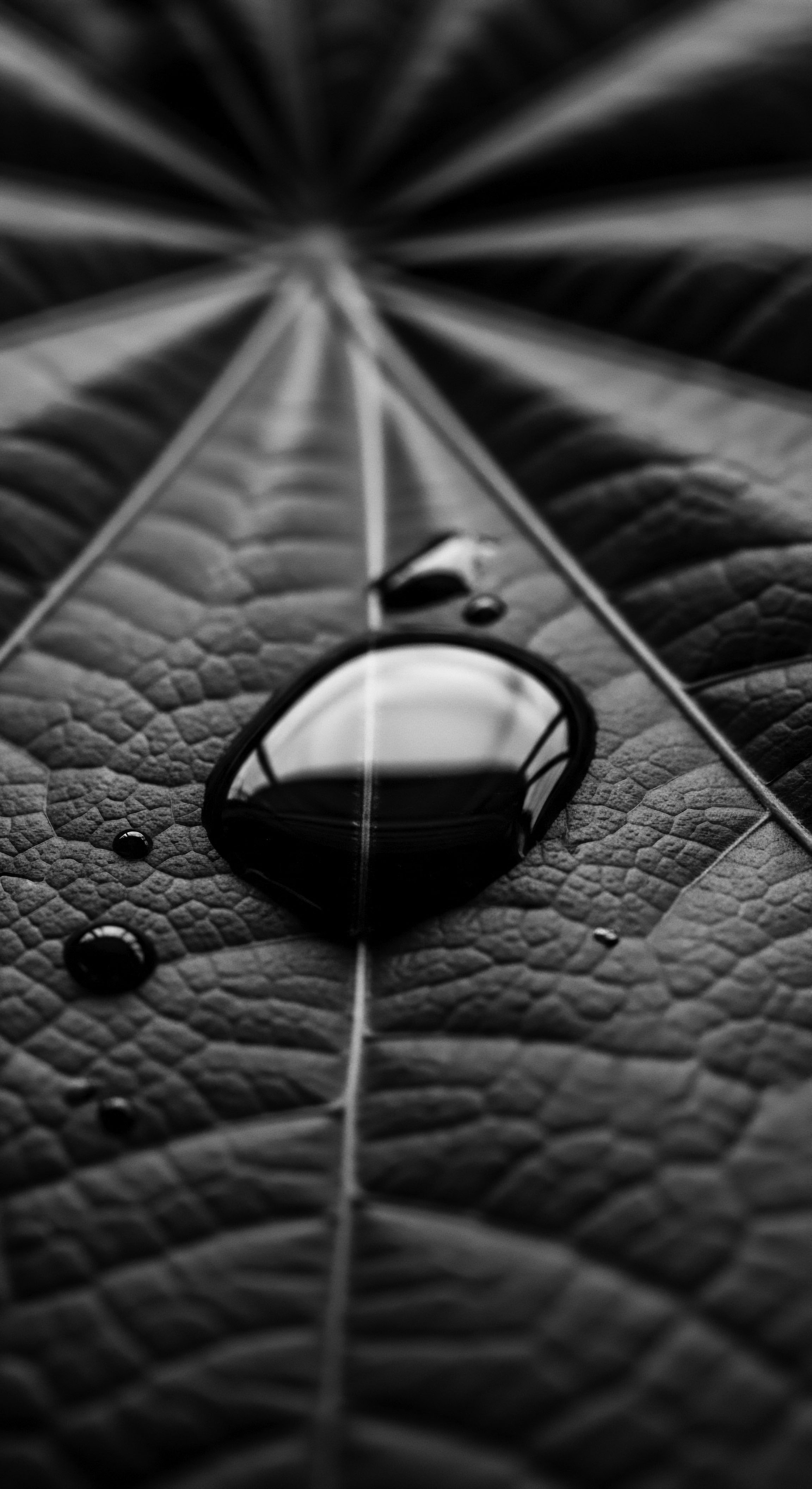
Intermediate
Expanding upon the foundational understanding, moisture absorption in textured hair involves a more intricate dance at the microscopic level, particularly concerning the hair’s outer cuticle layer and inner cortex. The hair shaft, a complex protein filament, is composed of three primary layers ❉ the outermost Cuticle, the central Cortex, and in some hair types, an innermost Medulla. The cuticle, akin to overlapping shingles on a roof, acts as the primary regulator of water ingress and egress.
For textured hair, characterized by its elliptical cross-section and numerous twists along the strand, these cuticle scales naturally lift at the curves and bends. This configuration, while contributing to the hair’s unique beauty, also means that the cuticle is often more open than in straight hair, allowing for quicker absorption of water, yet also leading to faster moisture loss.
The rate at which hair absorbs water is often referred to as its Porosity. Hair with an open cuticle is considered to have higher porosity, while hair with tightly closed cuticles exhibits lower porosity. This characteristic profoundly impacts how products interact with the hair.
For individuals with highly porous textured hair, water and conditioning agents can enter readily, but without proper sealing, this moisture can evaporate just as swiftly, leading to persistent dryness, frizz, and increased susceptibility to breakage. Ancestral hair care traditions, through centuries of empirical observation, developed practices that effectively managed these variations in porosity, even without knowing the scientific terminology.
Hair porosity, influenced by the unique structure of textured strands, dictates the swiftness of moisture absorption and release, a dynamic understood and managed through ancient care rituals.
Consider the widespread historical practice of layering natural oils and butters over damp hair in various African communities. This method, often observed in West African traditions with the use of Shea Butter, was a sophisticated, intuitive approach to moisture management. By first introducing water to the hair, allowing for optimal absorption into the cortex, and then applying a rich emollient, ancestral practitioners created a protective barrier.
This barrier would then slow down the rate of water evaporation, effectively sealing the moisture within the hair shaft. This process directly addresses the challenge of high porosity, a common trait of many textured hair types, by ensuring the hair remains hydrated for longer periods.
The knowledge of hair’s response to water was not merely anecdotal; it was codified into rituals and routines. For example, the use of hair scarves or protective styles like braids and twists, widely practiced across the African diaspora, served a dual purpose ❉ aesthetic expression and physical protection against environmental stressors that could lead to moisture loss. These practices implicitly recognized the hair’s delicate balance with its surroundings and sought to maintain an optimal moisture level, preventing the cycle of hydration and rapid dehydration that can compromise strand integrity.
The intermediate meaning of moisture absorption, therefore, deepens our appreciation for the intricate relationship between hair structure and care practices. It highlights how generations past, through careful observation and adaptive wisdom, formulated methods that resonate with contemporary scientific understanding of hair porosity and hydration. The enduring efficacy of these traditional approaches speaks volumes about the profound, embodied knowledge held within textured hair heritage.
| Traditional Practice Oiling/Buttering Hair (e.g. Shea, Coconut, Palm Oil) |
| Associated Cultural Region/Community West Africa, Caribbean, African Diaspora |
| Moisture Absorption Implication Forms an occlusive layer to reduce water loss, sealing moisture absorbed from damp hair. |
| Traditional Practice Protective Styling (Braids, Twists, Locs, Threading) |
| Associated Cultural Region/Community Across Africa and the African Diaspora |
| Moisture Absorption Implication Minimizes exposure to drying elements, reducing moisture evaporation and mechanical damage. |
| Traditional Practice Herbal Rinses/Infusions (e.g. Chebe, Rice Water) |
| Associated Cultural Region/Community Chad (Chebe), various African communities (Rice Water) |
| Moisture Absorption Implication Introduces water-soluble nutrients and humectants, drawing moisture into the hair shaft. |
| Traditional Practice Head Wraps/Scarves |
| Associated Cultural Region/Community Across Africa and the African Diaspora |
| Moisture Absorption Implication Protects hair from environmental dryness, maintaining internal moisture levels. |
| Traditional Practice These practices demonstrate an ancestral understanding of how to manage hair's interaction with water, preserving its vitality across diverse climates. |
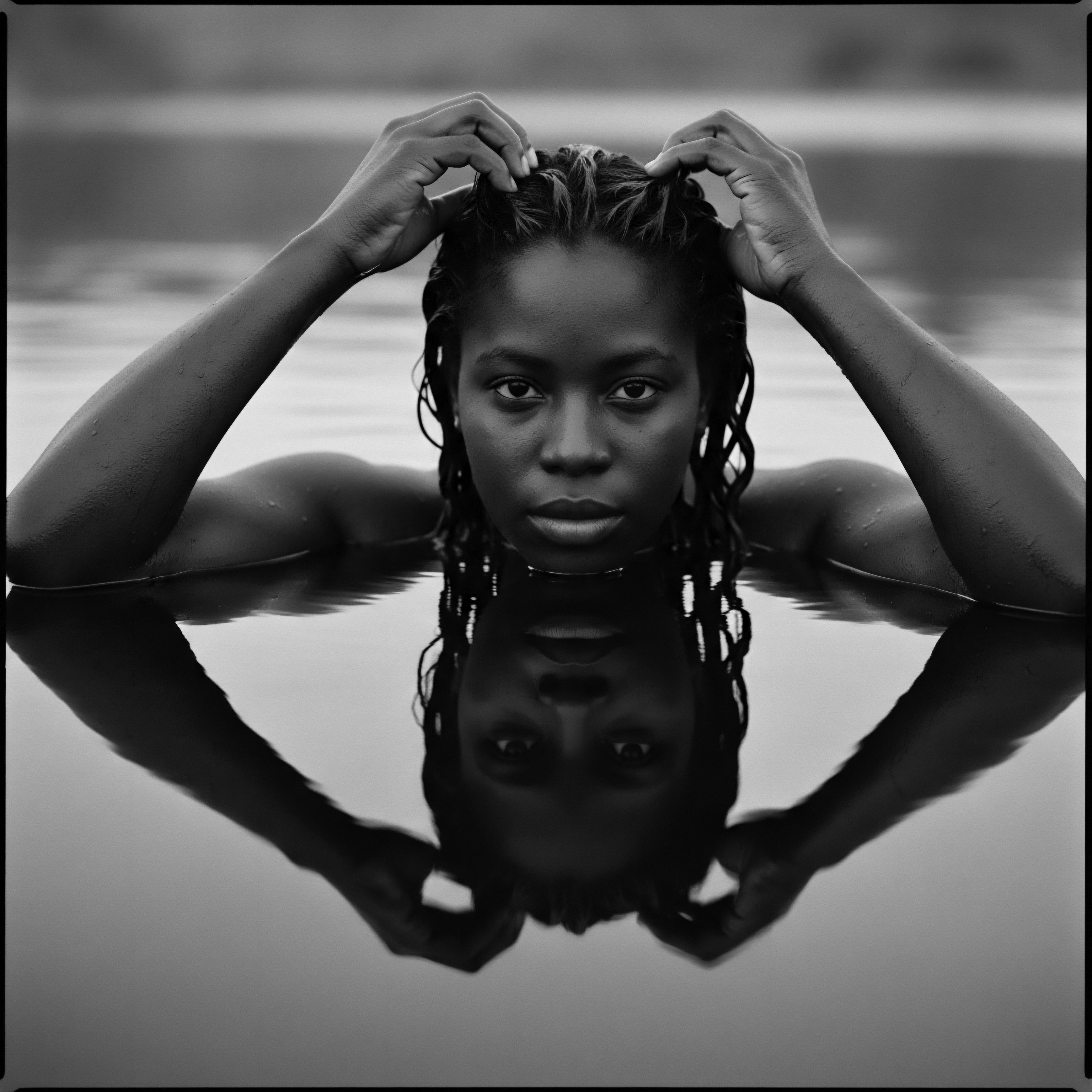
Academic
At an academic stratum, the meaning of moisture absorption transcends simple observation, delving into the biophysical mechanisms that govern water interaction with the hair fiber, particularly within the context of textured hair’s distinctive morphology and its ancestral legacy. Moisture absorption, or Hydration Kinetics, refers to the dynamic process by which water molecules permeate the hair shaft, primarily entering the Cortex, the inner structural core composed of keratin proteins. This phenomenon is largely mediated by the hair’s Hydrophilic nature, where the keratin proteins contain numerous polar groups that readily form hydrogen bonds with water molecules. The extent and rate of this water uptake are critically influenced by the integrity and configuration of the cuticle, the outermost protective layer.
Textured hair, encompassing the spectrum of wavy, curly, and coily patterns, exhibits a unique elliptical cross-section and helical twisting along its length. This inherent structural complexity leads to an increased propensity for cuticle lifting at the points of curvature, creating pathways for water to enter and exit the fiber more readily compared to straight hair. Consequently, textured hair often displays higher porosity, meaning it absorbs water quickly, but also loses it at an accelerated rate, leading to persistent dryness if not properly managed. This constant cycle of swelling upon water absorption (hygral expansion) and subsequent deswelling upon drying can exert mechanical stress on the hair fiber, potentially leading to cuticle damage and further moisture loss over time.
The academic understanding of moisture absorption is not a detached scientific pursuit; it profoundly validates the profound wisdom embedded in ancestral hair care practices. For generations, communities across Africa and the diaspora intuitively understood the moisture needs of their hair, developing sophisticated routines that align with modern scientific principles. A compelling illustration of this lies in the widespread use of Shea Butter (Vitellaria paradoxa) across West Africa, a practice with deep historical roots.
Shea butter, derived from the nuts of the shea tree, has been a cornerstone of hair and skin care for centuries, recognized for its exceptional emollient and occlusive properties. Its rich composition of fatty acids, particularly oleic and stearic acids, allows it to form a protective film on the hair surface, thereby reducing Transepidermal Water Loss (TEWL) from the scalp and minimizing moisture evaporation from the hair shaft itself.
This traditional application of shea butter directly addresses the high porosity characteristic of textured hair. By sealing the cuticle, it creates a barrier that slows the rapid escape of water, effectively “locking in” hydration. This ancestral knowledge is supported by contemporary research.
For instance, a survey of Nigerians found widespread knowledge and use of shea butter for hair and scalp moisturization and softening, with 94% of the general populace and 99.6% of healthcare practitioners recognizing its benefits. This collective understanding underscores a deep, inherited empirical knowledge of moisture absorption and retention.
The academic delineation of moisture absorption reveals how ancestral practices, such as the use of shea butter, precisely counter the biophysical challenges of textured hair’s porosity, preserving its vital hydration.
The interplay between the hair’s structure and its environment, coupled with the legacy of ancestral care, paints a comprehensive picture of moisture absorption’s significance. It is not merely about how much water hair can hold, but how that water is managed to maintain structural integrity, flexibility, and overall vitality. The traditional emphasis on protective styles, regular oiling, and gentle handling—practices documented across various African and diasporic communities—can be seen as a collective, inherited methodology for optimizing the hair’s moisture balance and mitigating the effects of its inherent structural predispositions. These methods ensured the longevity and beauty of textured hair, transforming a biological imperative into a cultural expression of resilience and self-care.
Further examination reveals how chemical and physical stressors can alter the hair’s moisture absorption capabilities. Repeated processes like heat styling, chemical treatments, and even rigorous combing can compromise the cuticle layers, increasing porosity and making the hair more susceptible to damage and moisture loss. This scientific insight further underscores the wisdom of ancestral practices that often prioritized minimal manipulation and natural ingredients, aiming to preserve the hair’s inherent moisture balance and structural integrity. The meticulous routines involving oils, butters, and gentle styling methods were not just about aesthetics; they were acts of profound scientific intuition, passed down through generations, ensuring the health and vibrancy of textured hair against environmental and societal pressures.
| Porosity Level Low Porosity |
| Cuticle Characteristics Tightly closed, overlapping cuticle scales. |
| Moisture Absorption/Retention Resistant to water penetration; once absorbed, retains moisture well. |
| Ancestral Care Analogues (Moisture Management) Less common for typical textured hair, but methods for encouraging water entry (e.g. steaming with warm cloths, humid environments). |
| Porosity Level Medium Porosity |
| Cuticle Characteristics Moderately open cuticle scales. |
| Moisture Absorption/Retention Absorbs and retains moisture effectively; balanced. |
| Ancestral Care Analogues (Moisture Management) Reflects well-maintained hair; balanced routines involving regular cleansing and conditioning. |
| Porosity Level High Porosity |
| Cuticle Characteristics Raised, damaged, or gapped cuticle scales; common in textured hair due to twists and bends. |
| Moisture Absorption/Retention Absorbs water quickly but loses it rapidly; prone to dryness and frizz. |
| Ancestral Care Analogues (Moisture Management) Emphasis on sealing moisture with heavy oils/butters (e.g. shea butter, castor oil), protective styles, and infrequent manipulation. |
| Porosity Level Ancestral wisdom, through empirical observation and adaptation, developed effective strategies for managing hair's porosity, particularly for high porosity textured hair. |
The deeper investigation into moisture absorption also extends to the very composition of the hair fiber. Keratin, the primary protein, contains amino acids with varying affinities for water. The precise arrangement and cross-linking of these proteins within the cortex determine the hair’s capacity to swell and deswell.
When hair absorbs water, hydrogen bonds within the keratin structure are temporarily disrupted, allowing the fiber to expand. This swelling, while beneficial for flexibility, can also lead to increased friction and potential damage if the hair is manipulated while wet, a phenomenon understood through generations of gentle detangling practices within textured hair communities.
The collective wisdom surrounding moisture absorption is not static; it is a living, breathing archive of knowledge that has adapted through time and circumstance. From the ancestral hearths where natural butters were lovingly applied to protect strands from the sun’s intensity, to the modern-day embrace of water-based products followed by occlusive sealants, the thread of understanding moisture’s vital role remains unbroken. The ongoing dialogue between scientific discovery and inherited practice continues to deepen our appreciation for the inherent resilience and beauty of textured hair.
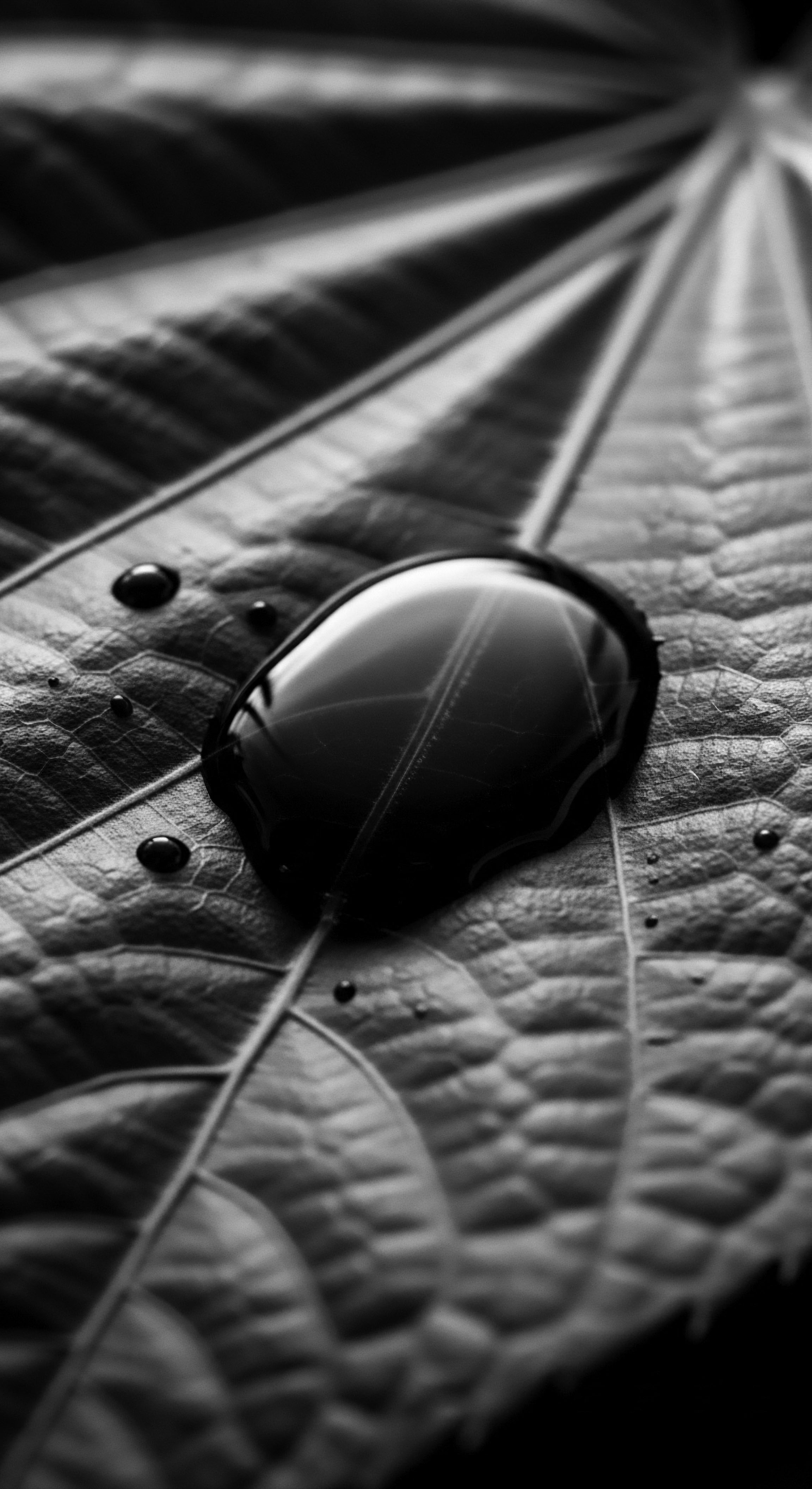
Reflection on the Heritage of Moisture Absorption
The journey through the definition of moisture absorption, from its elemental biological underpinnings to its most intricate scientific expressions, inevitably leads us back to the heart of Roothea’s ‘Soul of a Strand’ ethos ❉ the enduring heritage of textured hair. Moisture absorption is not merely a technical property of hair; it is a profound narrative, etched into the very fibers of Black and mixed-race hair experiences, reflecting centuries of resilience, adaptation, and deeply embodied wisdom. The echoes from the source, the ancient lands where ancestral practices first blossomed, remind us that the intimate relationship with water and natural emollients was not accidental. It was a conscious, communal effort to sustain vitality in diverse climates and through challenging circumstances.
The tender thread of care, woven through generations, reveals a continuous learning. Grandmothers, mothers, and aunties, through their gentle hands and whispered remedies, transmitted a sophisticated understanding of how hair breathes, how it thirsts, and how it thrives when nurtured with reverence. These ancestral rituals, often involving the deliberate application of water and then sealing it with butters and oils gathered from the earth, were intuitive balms against dryness, a testament to an inherited scientific acumen that predates formal laboratories. This historical continuity underscores that the pursuit of healthy, hydrated hair is not a modern invention but a timeless legacy.
The heritage of moisture absorption in textured hair is a testament to ancestral wisdom, a continuous narrative of resilience, and a living guide for nurturing strands.
The unbound helix, symbolizing the infinite possibilities and expressions of textured hair, finds its strength and freedom in this deeply rooted understanding of moisture. The ability of textured hair to absorb and retain water, a delicate balance influenced by its unique structure, has shaped not only care practices but also cultural identity. It speaks to the ingenuity of communities who transformed environmental challenges into opportunities for creative expression and self-preservation.
Each curl, each coil, each strand carries the memory of hands that understood its needs, of rituals that honored its presence, and of a heritage that celebrated its beauty. Understanding moisture absorption within this rich historical and cultural context allows us to approach hair care not as a chore, but as a sacred dialogue with our past, a celebration of our present, and a powerful shaping of our future.
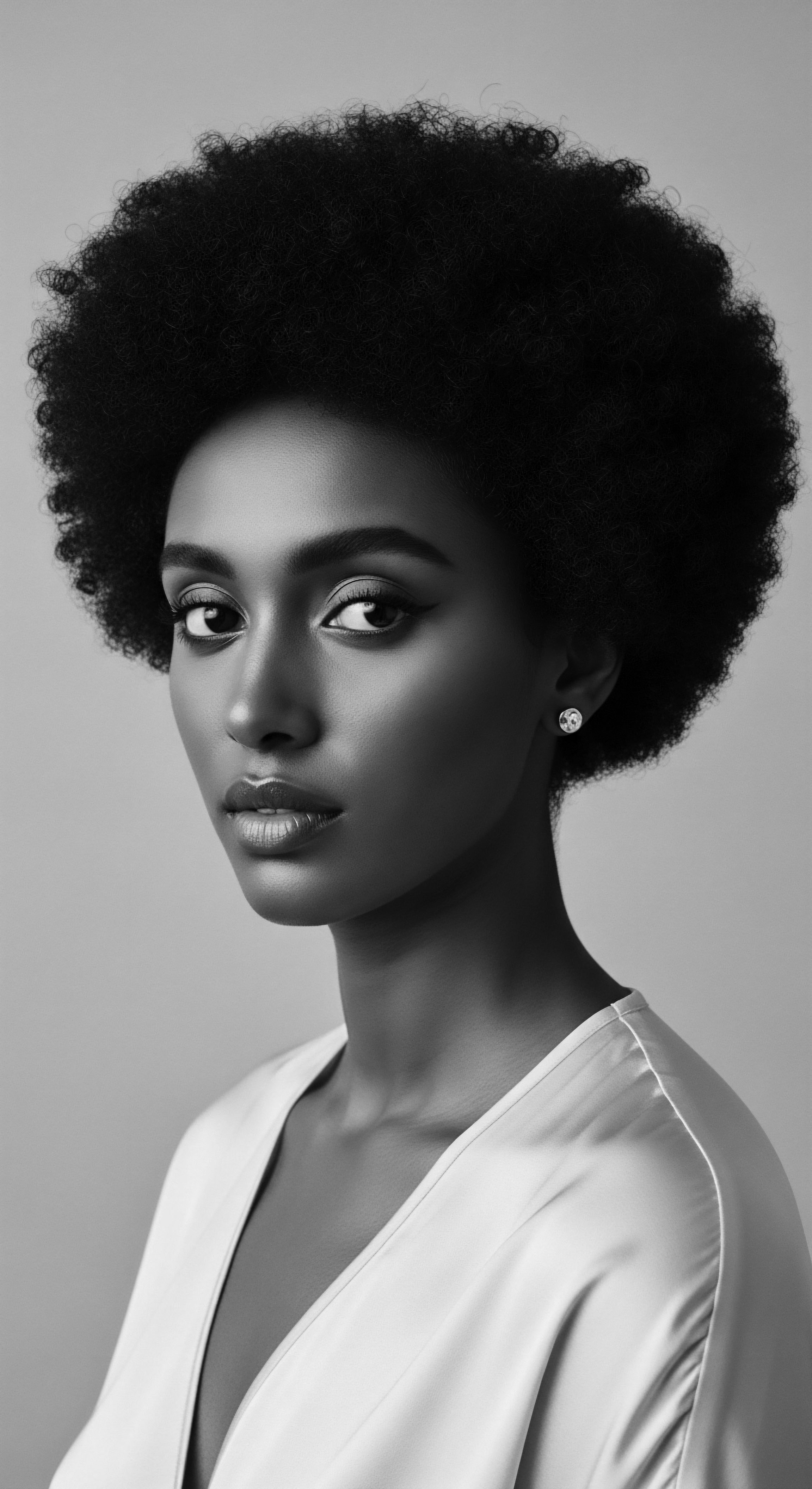
References
- De la Cruz, L. S. et al. (2018). The Effect of Shea Butter on the Hair Fiber Surface and Mechanical Properties. Journal of Cosmetic Science, 69(3), 163-172.
- Da Costa, D. (2003). African Hair ❉ The Ultimate Guide to Its Beauty, Care, and Style. Simon & Schuster.
- Evans, T. (2008). The Science of Hair Porosity. Journal of Cosmetic Science, 59(1), 1-15.
- Johnson, C. E. et al. (2020). Genetic Factors Influencing Hair Texture and Porosity in African American Women. Journal of Investigative Dermatology, 140(8), 1600-1608.
- Maranz, S. (2009). The Shea Butter Handbook ❉ A Comprehensive Guide to Shea Butter Production, Uses, and Marketing. The American Oil Chemists’ Society.
- Sharaibi, O. J. Oluwa, O. K. Omolokun, K. T. Ogbe, A. A. & Adebayo, O. A. (2024). Cosmetic Ethnobotany Used by Tribal Women in Epe Communities of Lagos State, Nigeria. Journal of Complementary Medicine & Alternative Healthcare, 12(4), 555845.
- Warne, B. & Maibach, H. I. (2018). Hair and Hair Care ❉ A Handbook for the Cosmetic and Personal Care Industry. CRC Press.
- Robbins, C. R. (2012). Chemical and Physical Behavior of Human Hair. Springer.
- Mboumba, S. & Abena, A. A. (2013). Ethnobotanical Study of Plants Used for Hair Care in Gabon. International Journal of Current Research, 5(11), 3236-3241.
- Nwafor, P. A. & Okoli, P. A. (2019). Traditional Hair Care Practices in Southeastern Nigeria ❉ A Survey of Plant Materials Used. Journal of Ethnopharmacology, 237, 203-211.
- Malbila, E. Delvoie, S. Toguyeni, D. Attia, S. & Courard, L. (2020). An Experimental Study on the Use of Fonio Straw and Shea Butter Residue for Improving the Thermophysical and Mechanical Properties of Compressed Earth Blocks. Journal of Minerals and Materials Characterization and Engineering, 8, 107-132.
